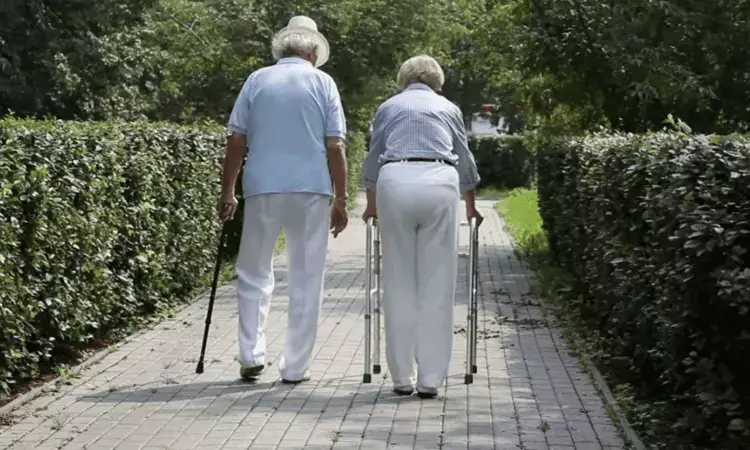- Home
- Medical news & Guidelines
- Anesthesiology
- Cardiology and CTVS
- Critical Care
- Dentistry
- Dermatology
- Diabetes and Endocrinology
- ENT
- Gastroenterology
- Medicine
- Nephrology
- Neurology
- Obstretics-Gynaecology
- Oncology
- Ophthalmology
- Orthopaedics
- Pediatrics-Neonatology
- Psychiatry
- Pulmonology
- Radiology
- Surgery
- Urology
- Laboratory Medicine
- Diet
- Nursing
- Paramedical
- Physiotherapy
- Health news
- Fact Check
- Bone Health Fact Check
- Brain Health Fact Check
- Cancer Related Fact Check
- Child Care Fact Check
- Dental and oral health fact check
- Diabetes and metabolic health fact check
- Diet and Nutrition Fact Check
- Eye and ENT Care Fact Check
- Fitness fact check
- Gut health fact check
- Heart health fact check
- Kidney health fact check
- Medical education fact check
- Men's health fact check
- Respiratory fact check
- Skin and hair care fact check
- Vaccine and Immunization fact check
- Women's health fact check
- AYUSH
- State News
- Andaman and Nicobar Islands
- Andhra Pradesh
- Arunachal Pradesh
- Assam
- Bihar
- Chandigarh
- Chattisgarh
- Dadra and Nagar Haveli
- Daman and Diu
- Delhi
- Goa
- Gujarat
- Haryana
- Himachal Pradesh
- Jammu & Kashmir
- Jharkhand
- Karnataka
- Kerala
- Ladakh
- Lakshadweep
- Madhya Pradesh
- Maharashtra
- Manipur
- Meghalaya
- Mizoram
- Nagaland
- Odisha
- Puducherry
- Punjab
- Rajasthan
- Sikkim
- Tamil Nadu
- Telangana
- Tripura
- Uttar Pradesh
- Uttrakhand
- West Bengal
- Medical Education
- Industry
Self-reported walking difficulty associated with increased risk of fractures: JAMA

Australia: A cohort study of 238 969 participants revealed that self-reported walking limitations in middle-aged and older adults were associated with an increased risk of fracture. The findings published in JAMA Network Open suggest that walking ability should be sought by clinicians for identifying high-risk candidates for further assessment.
"Among men and women age 45 and over, 1 in 5 reported a limitation in walking 1 Km or less," the researchers reported. "Walking limitation was significantly associated with between a 32% and 219% higher fracture risk and contributed to approximately 60% of fractures."
About 40% of women and 25% of men older than 60 years are affected by fractures, and their incidence is expected to increase exponentially over the next decades. The personal burden of fractures encompasses an increased risk of disability, refracture, loss of independence, and premature mortality.
Muscle function is tied to fracture risk due to its association with the risk of falls and due to its intimate association with bone loss, which is one of the strongest fracture risk predictors. However, there has been no investigation of the relationship between self-reported walking limitation, a proxy of muscle function, and fracture risk. Therefore, Dana Bliuc, Garvan Institute of Medical Research, Sydney, New South Wales, Australia, and colleagues aimed to determine the association between a self-reported walking limitation of 1000 m or less and a 5-year risk of fracture.
The prospective cohort study compared individuals with various degrees of walking ability limitation at 1000 m (a little limitation and a lot of limitation) and those without limitation (no limitation) accounting for falls, age, prior fractures, and weight. Follow-up of the participants from the ongoing population-based Sax Institute 45 and Up Study was done from recruitment (2005-2008) for five years (2010-2013).
The main study outcomes were incident fracture and site-specific fractures (vertebral, hip, and nonhip nonvertebral [NHNV] fractures).
266 912 participants were enrolled in the 45 and Up Study, of which 238 969 were included, with 53% women (mean age, 63 years) and 47% men (mean age, 61 years).
The study revealed the following findings:
- Approximately 20% reported a degree of limitation in walking 1000 m or less at baseline (24% women; 21% men).
- During a mean follow-up of 4.1 years, 7190 women and 4267 men experienced an incident fracture.
- Compared with participants who reported no walking limitations, a little limitation and a lot of limitation were associated with a higher risk of fracture (a little limitation among women: hazard ratio [HR], 1.32; a little limitation among men: HR, 1.46; a lot of limitation among women: HR, 1.60; a lot of limitation among men: HR, 2.03).
- Approximately 60% of fractures were attributable to walking limitation. The association was significant for hip, vertebral, and NHNV fractures and ranged between a 21% increase to a greater than 219% increase.
In the study, self-reported walking limitations were associated with an increased fracture risk among men and women. Limited walking ability can be sought by clinicians to identify high-risk candidates for further bone assessment (ie, BMD testing).
"There is a need for future studies to see whether this simple evaluation could improve the existing fracture risk tools and whether measures to improve walking ability would have a beneficial impact on fracture risk," the researchers concluded.
Reference:
Bliuc D, Tran T, Alarkawi D, et al. Patient Self-Assessment of Walking Ability and Fracture Risk in Older Australian Adults. JAMA Netw Open. 2024;7(1):e2352675. doi:10.1001/jamanetworkopen.2023.52675
Dr Kamal Kant Kohli-MBBS, DTCD- a chest specialist with more than 30 years of practice and a flair for writing clinical articles, Dr Kamal Kant Kohli joined Medical Dialogues as a Chief Editor of Medical News. Besides writing articles, as an editor, he proofreads and verifies all the medical content published on Medical Dialogues including those coming from journals, studies,medical conferences,guidelines etc. Email: drkohli@medicaldialogues.in. Contact no. 011-43720751


